总结GDC 2013独立游戏开发者的9大建议
作者:David Silverman
我出席GDC 2013大会时,多数时间耗在独立游戏开发者峰会中,在那里听到许多独立开发者谈论游戏项目和公司运营的成败经验。在此我总结了我认为最有用处,最可能让你成为出色开发者的9大建议。
设计篇
“无论何时,都要尽可能重用现成的元素,而不是创造新内容。”——Andy Hull
Hull在短暂的演讲中谈论了他制作独立游戏《Spelunky》并将其投放到Xbox 360的过程,及其木制玩具设计师的背景对这个项目的帮助。他指出当你设计一个木制玩具时,产品的每一个方面都存在极大增加成本的可能。即使是简单地添加一种涂料,都会增加这个玩具产品的时间和资金成本。
尽管电子游戏与此不同(至少从技术层面上讲是如此),但仍要注意合理使用你所拥有的游戏元素,并注意不要在游戏中添加过多元素。
在面向Xbox 360开发《Spelunky》时,设计师们开始关注每件武器在游戏中的用处,并判断出手枪是逊于散弹枪的选择。除此之外,手枪还有一整个无法与其他道具共享的弹药系统,因此拥有并管理一支手枪可能会让玩家很抓狂。
在将游戏移植到Xbox平台时,他们决定移除手枪元素,并以回旋镖取而代之。回旋镖不但可发挥许多与手枪相同的功能,还有一个加分优势,即在它飞回来时你若纵身跃起,它就会击中你背后的敌人。移除手枪系统让设计师获得了为游戏添加新元素的自由,令他们得以引进新机制。
正如Sid Meier所言,“游戏是一系列有趣的选择”。通过确保你的每个玩法机制都独具一格,并且功能鲜有重叠,你就能够为玩家提供有趣的选择,给予他们重返游戏的理由。在评估玩法元素时,要先问问自己这每个元素的用途。如果你发现两个元素在本质上很相近,那就得考虑砍削其中一者或者重新设计,使之更具独特性。
“不要惧怕后退一步重新设计或重新开发。”——Dylan Cuthbert
Cuthbert在演讲中提到的理念是,有时候即使你有一个很好的理念,它也很可能成为让你无法获得更棒理念的障碍。
在Cuthbert成立游戏工作室Q-Games之前,他曾为SNES开发过原版《Star Fox》。在开发这款游戏时,他们原计划把所有关卡都设置成开放区域,以便玩家四处飞行并战斗。虽然这一机制可行,并看似有趣,游戏本身却并没有他们所想象的那么好玩。游戏在此阶段停留了数月之久,直到项目总监终于提出一个移除自由漫游这一概念的想法。
当时这个想法似乎很荒诞,因为这款游戏绝大多数内容是基于玩家可以自由飞行这一理念。除此之外,当时的自由漫游元素也受欢迎,如果移除这一元素似乎就会极大削弱游戏的吸引力。尽管存在这两个顾虑,他们移除了自由漫游这一功能时却发现,他们更容易开发游戏了,因为他们获得了更多控制玩家体验的权利,并且游戏也变得更加有趣,因为玩家不会再轻易迷失方向,更容易理解当前发生了什么状况。
虽然最初可能看起来很荒唐,但重要的是记住无论你想制作哪类游戏,游戏中都不存在哪种必不可舍弃的功能。要从多个角度评估你的游戏,尝试用多种不同的方法植入同一种类型的机制通常更可能催生出有趣的游戏。除此之外还要记住,某项功能看似游戏的一部分,但实际上未必如此。在开发过程中要向自己提一个问题:“这个功能阻碍了什么元素?”或者“这一机制是否隐藏了更好的机制?”简单而言,就是不要惧怕从游戏中移除一个机制,因为这可能会让你获得新灵感,找到一个更好取代它的机制。
需要指出的是,他们在开发《Star Fox》过程经常添加机制并查看游戏植入新机制之后的变化,然后迅速移除不必要的机制。这让他们得以真正看清游戏含有和未含有某机制的情况,也让他们更了解某机制对游戏产生了什么影响。
Gilgenbach在演讲中讨论了他个人在开发独立游戏《Retro/Grade》过程中与强迫症和完美主义作斗争的经历。在开发游戏过程中,Gilgenbach沉迷于游戏外观,并植入了一系列高级的图像功能,但最终却发现应该在游戏实际内容上多花时间,而不仅仅是让游戏更为美观。
在《Retro/Grade》开发早期阶段,游戏图像并不惊人,但也绝对不算难看。
在开发后期,此此的游戏图像已经高度润色,但其中的复杂性却造成了一种视觉凌乱感。
《Retro/Grade》是一款基于节奏的游戏,已经开发数年之久,但它最终发布时却只含有10首可播放的歌曲。问题就在于他并没有在内容开发上用足心思,而是执拗于让游戏引擎更为强大,添加了不必要的累赘功能和视觉效果。
Gilgenbach在演讲中指出,玩家在游戏中的敌人Octo-bot眼睛实际上是由一系列复杂的动画所组成,他投入了许多小时制作3D模型,以确保它的眼睛像活物一样正确运行。对于一款拥有许多模型或角色特写的游戏,这也许是值得花时间的理由,但这款游戏却并不属于这种情况。因为玩家几乎看不到Octo-bot的眼睛,即使看到了,它最多也只是这个角色一个毫不起眼的元素。如果Gilgenbach肯在内容开发上多花时间,或者移除一些过于耗时的视觉效果,他可能就会推出一个更棒的成品。
在开发你的游戏时,不要让你自己的游戏理念,以及你想修补的小细节屏蔽了真正重要的元素。要常考虑你所制作的东西将对玩家及其体验造成什么影响,并常问自己这一功能究竟是会增加游戏销量还是玩家在游戏中的乐趣。
开发篇
“重头开始是个陷阱。”——Devin Reimer & Alexander Schwartz
Owlchemy Labs创始人在演讲中讨论了如何保持公司成功运营,启动新项目时如何尽量减少浪费时间。他们提到的一个经验就是,如果可以使用现成的工具或软件完成任务,那就绝不要白费功夫从头做起。
上图是Owlchemy Labs最近游戏《Jack Lumber》的一张图片。它完全由Unity开发而成,他们也因此得以专注于游戏设计、玩法,无需费力研究如何让玩法准确运行。
作为独立开发者,你可能想制作一款完全原创的游戏,或者接手发行商的外包工作。在这两种情况下,项目最开始时如果为植入基本键盘控制方式或者让游戏引擎正确绘制2D图像而花费大量时间,那就是一种浪费,因为你本该把时间用于植入高级玩法功能或平衡所有不同玩法元素。你的时间最好用于设计和优化游戏,而非编写一个之前已经使用了上百次的系统。
开启一个新项目时,要常考虑是否可使用现成的引擎或工具,或者是否可重用你之前制作的其他游戏中的美术元素。虽然让游戏呈现独特性很重要,但也要注意不要让项目未完工就面临资金匮乏的窘境。如果有办法使用现成工具或资源来加快开发进程,那就需要考虑下这些情况。
“选择合适的美术风格。”——Ian Marsh
Marsh在演讲中则讨论了他过去几年在自己的公司NimbleBit中所学到的知识,游戏所选择的美术风格是他讨论的内容之一。他认为美术风格不但决定了游戏的外观和感觉,还会对游戏内容的开发时间产生深远的影响。有些复杂的美术风格会花费更长的开发时间,或者需要更多人力去执行,所以选择此类美术风格对一名独立开发者来说并不实际。
以上是来自Nimblebit游戏《Tiny Tower》的图片。它采用的是极简艺术风格,这更便于执行,并且更易于开发者推出多个不同的变体。
如果你有制作《光晕4》或《暗黑破坏神3》这种游戏的时间和资源那是再好不过了,但要知道这些美术风格是由上百人的开发者、美术人员所组成的团队历时数年时间开发而成。若是寄希望于资金紧凑、四五人的小团队做出具有如此细节和质量的游戏,那就真是太不现实了,并且很可能导致你的游戏永远也无法完工。
选择美术风格是开发游戏中重要的一步,这个决定会对完成每项美术资产所需的时间和精力带来影响。如果你制作的游戏用2D或3D都可以轻松完成任务,采用全3D资产(游戏邦注:例如使用法向量贴图、高光贴图、反射贴图等),就可能是一种浪费,并且可能不必要地扩大开发范围,以及你完成游戏所需的团队成员数量。
关键在于,谨慎选择游戏的美术风格,因为这可能会影响到玩家对游戏的看法,并且还会影响到游戏的开发难度。不要自不量力地做一些团队和项目所无法承受的事情,要找到一个平衡点,让游戏在呈现可行的美术风格之时,传达你想呈现的理念。
“注意你在每个项目中所投入的时间。”——多名开发者的经验之谈
这实际上是来自不同源头的两个建议,但它们都与时间管理有关,所以我认为最好把它们合并在一起。
Owlchemy Labs开发者表示,他们认为你在一个原型上所投入时间不应该超过一周,因为一天创造的原型就已经足够一个月的润色。这里的建议可能比较适用于他们团队,因为他们的一般开发周期是6个月,所以最重要的是清楚你团队的行事风格和开发周期。这有助于让你更快决定项目开发时间,是否持续投入同一个项目,或是转向新项目。
NimbleBit成员Ian Marsh提出了类似的观点,他称独立开发者不应该在同一个项目上投入6个月以上的时间。作为一名独立开发者,尤其是在你的事业生涯早期,最重要的事情之一就是尽量制作更多游戏,在短时间内收获更多经验,这样你才会明白自己擅长什么,不擅长什么。如果你在同一个项目中投入过多时间,这会阻碍你继续向前和尝试新事物。除此之外,你在原创项目中投入额外时间也会给它的成功带来更多压力,令其以更失败的方式落幕。
限制你在一个项目中投入的时间有助于防止项目变得比预期更为膨胀。过早结束项目固然不可取,但对于一个原计划开发时间仅为数月的项目,如果拖牌了两三年仍未完工,情况更糟糕。有时候你必须学会放手。
运营篇
“考虑三种玩家类型:有技能的玩家,有时间的玩家,有钱的玩家。”——Shane Neville
Neville在演讲中谈到了《Shellrazer》的开发过程。《Shellrazer》的设计一开始就考虑到了IAP元素,但Neville清楚如果自己太过重视游戏内部交易功能,这款游戏就不会太有趣,一开始也不太可能吸引到大量玩家。
为了解决这一问题,开发者在制作游戏过程中考虑了有技能的玩家,有时间的玩家,有钱的玩家这三种用户类型的需求。
为了吸引有技能的玩家,他们制作了一个基于经典RPG的强大战斗系统,这便于他们创造真正有趣且具有吸引力的游戏,这样即使不想花钱的玩家也能享受其中乐趣。这个强大的战斗系统也让游戏更易于引来大量玩家。
为了招徕有大把时间,但技能不佳的玩家,他们为每个关卡提供了一些随机性元素,例如敌人类型,以及敌人进攻规模。这意味着即使你在同个关卡中玩过多次,你所同到的敌人也不尽相同。这增加了游戏的重玩性和刷任务的趣味性,避免技能不佳的玩家第三第四回玩游戏时就开始腻烦。
最后他们还考虑了既没技能,又没时间,但却愿意掏钱的玩家需求。对于这些玩家,开发者要确保玩家能够以50美元及其以下金额的价钱购买到每件道具,以及最大化升级道具。
这意味着开发者深谙每件道具在游戏中的价值,因为他们会比较道具的成本以及游戏成本,这也意味着玩家不会因为在游戏中掏钱而破产。这些开发者确实是将购买内容的用户视为游戏玩家,而不是像挤牛奶一样的压榨对象。
若要让游戏获得成功,就需要考虑每种玩家类型的不同需求,通过同时取悦这三个群体,他们最终推出了一个更为强大的产品。
“包装与你出售的产品同样重要。”——Andy Hull
Andy Hull提到的另一件事就是包装的重要性。根据他做木制玩具的经验,在某些情况下,木制的箱子会极大增加产品的可靠性,并为产品风格加分,因为这种包装看似与产品融为一体。这种包装会让产品更为昂贵,但也让产品更受儿童和家长欢迎,因为它在整体上提升了产品的品质。
(这是Simpson Movie的唱片包装,它同游戏无关——但它却是我见过的最佳包装之一。)
在游戏领域,包装就是屏幕截图,盒套视觉设计,预告片以及所有可能将潜在玩家转变为付费用户和粉丝的元素。要确保你的产品“包装”如何反映游戏的品质。
在准备发布或推广游戏时,要花一些时间确保你所推出的一切内容都与游戏相关,并且像游戏本身一样具有吸引力,确保你像开发游戏一样用心在包装上所投入时间与精力。制作高质量的截图呈现游戏的闪光点,多下功夫制作真正出色的预告片,让你的游戏更具吸引力,方有望让人们更愿意购买游戏。
“尽你所能地推广游戏。”—-多名开者的经验之谈
这个建议实际上也是由多名发言者的演讲内容总结而成的。作为独立开发者,你所遇到的最棘手的事情之一就是让自己的作品获得曝光度。鉴于这个原因,你得尽己所能让人们谈论和想到你的游戏。
一个简单的事实就是,你和团队中的其他成员可能就是游戏的最大粉丝团。虽然有些运气好的游戏可以收获大批粉丝,但许多独立游戏运气就没有这么好了,即使有也敌不过一些小型的主流游戏。鉴于这种情况,你需要尽己所能传播你的游戏,确保你所见到的每个潜在玩家都知道这款游戏。
我所得知的最佳建议之一就是,不要惧怕抛头露面。参加GDC等行业活动,谈论自己的游戏可能并非难事,因为你知道其他开发者可能会稍微留意一下,但参加PAX这类大众活动或本地小型会议,可能就会令人胆怯,因为你不知道潜在玩家心里会怎么想。不要让这种恐惧阻止你的前进步伐,记住,你所遇到的每个人都是潜在玩家,如果他们从未听说过你的游戏,那这就是向他们介绍游戏的绝佳机会。除此之外,这些人会参加会议和活动就是因为他们本身喜欢游戏,如果你的游戏够有趣,他们还是会看上几眼的。
此外,不要将自己局限于参加游戏展会和活动,你还可以通过本地高校或节庆活动,甚至是在带有公告板的公共场所宣传你的游戏。如果你想让自己的游戏获得关注,你就应该抓住一切机会推广和宣传,不要只选择“安全稳妥”的地方。
这个建议的要点很简单:抓住一切机会推广游戏,因为你得争取一切潜在玩家。除此之外,口头传播也是积赞人气的绝佳途径,所有你能说服其玩游戏的人,都有可能让其他人也来试玩游戏。(本文为游戏邦/gamerboom.com编译,拒绝任何不保留版权的转载,如需转载请联系:游戏邦)
9 Tips for Indie Game Developers I Learned at GDC 2013
David Silverman
When I attended GDC 2013 I spent most of my time at the Independent Game Developers Summit where I got to hear many successful indie developers talk about how their projects succeeded and how they’ve stayed in business through both success and failure. In this article I’ll go over the tips I found most useful, and the ones I believe will help you be the best developer you can be.
Design Tips
Whenever possible, reuse existing elements, rather than creating new ones.
Andy Hull
In Hull’s mini-talk, he discussed the work he did on the indie game Spelunky when it was being brought to the Xbox 360, and how his experience as a wooden toy designer helped him. One of the things he discussed was the fact that when you are designing a wooden toy, which actually has to be mass-produced, every aspect of the product has the potential to drastically increase the price of production. Even something as simple as adding an extra paint color increases the time and money that go into the production of a toy.
While this is not the case for video games, at least not technically, it is still very important to make good use of the game elements you have, and be cautious about adding too many elements to your game.
While developing Spelunky for the Xbox 360 the designers started to look at the usefulness of each weapon in the game, and determined that the Pistol was essentially an inferior version of the Shotgun, another weapon within the game. On top of that, Pistols had an entire ammo system that was not shared with any other items, and thus having and managing a Pistol could be annoying for the player.
When moving the game to the Xbox they decided to remove the Pistol and replace it with a Boomerang. Not only did the Boomerang do many of the same things as the pistol, it also had the added bonus of being able to hit enemies behind you if you jumped when it returned to you, instead of catching it. By removing the Pistol it gave them the freedom to add a new item to the game, and allowed them to introduce a new mechanic.
As Sid Meier says, “A game is a series of interesting choices”. By making sure that your gameplay mechanics are each unique, and that there is very little overlap between their functions, you are keeping the choices interesting for the player, and giving them a reason to come back. When evaluating your gameplay elements ask yourself what the purpose of each one is. If you find two elements are very similar in nature, you may want to consider cutting one or re-designing it so that it is more unique.
Don’t be afraid to take a step back and re-design or re-develop.
Dylan Cuthbert
In his talk, Cuthbert discussed the idea that sometimes, even when you have a good idea, it may be blocking you from seeing a better idea.
Before Cuthbert founded the game studio Q-Games, he worked on the original version of Star Fox for the SNES. When he was working on Star Fox, they had originally planned to make all of the levels big open areas that the player could fly around and fight in as they pleased. While the mechanic worked, and seemed to be interesting, the game itself wasn’t as fun as they thought it should be. The game was in this state for a number of months until eventually the director came up with the idea of removing the free-roaming aspect of the game.
At the time this idea seemed absurd because so much of the game was based around the fact that you could fly anywhere in the game field. On top of that, free-roaming was very popular at the time so it also took away what seemed to be a huge draw to the game. Despite both of these things, when they removed the free-roaming features of the game, they found it actually became easier to develop because they had more control over the player’s experience and what they were doing at any one time, and it became more fun because the player couldn’t get lost, and had a greater understanding of what was going on.
While it may seem absurd at first, it’s important to remember that no matter what kind of game you want to make, there is no feature that has to be in your game. Evaluating your game from multiple perspectives and trying out many different ways to implement the same type of mechanic will often lead to much more interesting games. On top of that, just because a feature seems integral to the game, it doesn’t mean it is. A good question to ask yourself throughout the development of your game is “What is this feature occluding?” or “Is there a better mechanic being hidden by the shadow of this mechanic?” Simply put, don’t be afraid to remove a mechanic from your game, because that may end up giving you the inspiration for an even better mechanic to use in that one’s place.
I think it’s also interesting to note here that while they worked on Star Fox they would often add mechanics to see how the game changed with the new mechanics included, and then remove them just as quickly. This allowed them to truly see the contrast of the game with and without the mechanic, which gave them an even stronger understanding of how it affected the game.
Focus on the content.
Matt Gilgenbach
In his talk, Gilgenbach discussed how his personal struggles with OCD and perfectionism hurt the development of his indie game Retro/Grade. While developing the game Gilgenbach obsessed over the look of the game and getting a number of advanced graphical features implemented, but in the end his time would have been better spent expanding the actual content of the game and not just making everything especially pretty.
Retro/Grade early in development. The game’s graphics are not incredible but they also aren’t bad by any means.
Retro/Grade later on in development. By this point the graphics are very polished looking but the complexity of them makes things seem somewhat visually confusing. Retro/Grade was a rhythm-based game that was in development for multiple years, yet when it finally released it only had 10 playable songs. The problem he ran into was that he didn’t focus enough on content development, and focused instead on making the game engine more capable, and adding unneeded features and visuals. For example, look at the large “Octo-bot” the player is fighting in the video below:
In Gilgenbach’s talk he said that there are actually a number of complex animations being done by the Octo-bot’s eye, and that he spent many hours on the 3D model making sure that the eye would function correctly as if it were a real object. In a game where you had a lot of close-ups of this model or character, this would be very important and would be a good use of time, but in this game, and in this example, it’s not. You can barely see the eye – and, even if you could, it is a minimally important aspect of the character at best. If Gilgenbach had spent more time on content development, or removed some of the visual features that made the art assets so time-consuming to produce, he would have ended up with a better final product overall.
When working on your games, don’t let your own perceptions of the game, and the miniscule things you want fixed, prevent you from seeing what’s truly important. Always consider how the thing you’re working on will impact the player and their experience, and always ask yourself whether a feature will increase sales or the player’s enjoyment of the game itself.
Development Tips
Reinventing the wheel is a trap.
Devin Reimer and Alexander Schwartz
In this talk, the founders of Owlchemy Labs discussed how they keep their business successful and what they do to minimize wasted time when starting new projects. One thing they touched on was the fact that you should never spend substantial time trying to do something from scratch when you could just as easily use existing tools or software to get the job done much more quickly.
This is an image from Owlchemy Labs’ most recent game, Jack Lumber. It was made entirely with Unity, which allowed them to focus on design and gameplay and not on making the intricacies of touch gameplay work correctly. As an indie developer you are either going to be making a completely original game, or doing contract work for a publisher or outside source. In both of these scenarios, having to spend countless hours at the beginning of the project implementing basic keyboard controls or getting the game engine to draw 2D images correctly, would be a waste when you could be spending your time on more important things like implementing advanced gameplay features, or balancing all of the different gameplay elements. In the end, your time is better spent designing and polishing the game, not programming a system that you’ve made a hundred times before.
When starting a new project, always consider whether there is an existing engine or tool you could be using, or if you could recycle elements of the art style from other games you’ve previously made. It’s important that all of your games be unique, but it’s also important that every game you make gets finished before you run out of money, so if there are ways to speed up the development by using existing tools or resources, you may want to at least consider those ideas.
Choose the right art style.
Ian Marsh
In his talk, Marsh discussed many of the things he learned over the years his company NimbleBit has been in business. One of the things he discussed was the impact your choice of art style can have on your game. Not only does the art style dictate the look and feel of the game, it also has a profound effect on how long the content will take to create. Some art styles, by necessity of their complexity, will take substantially longer, or require many more people to be executed well, so choosing to go with one of these styles could be very damaging for an indie developer.
This is an image from Nimblebit’s game Tiny Tower. While their art style is simplistic, it was easy for them to execute and allowed them to have a lot of different variations and possibilities easily. While it would be great if you had the time or resources to commit to making your indie game look like Halo 4 or Diablo 3, those art styles were both developed over the course of many years by teams of hundreds of developers and artists. Expecting to be able to reproduce that level of detail and quality with a five-man team on a shoestring budget is simply unrealistic, and will likely prevent your game from ever getting completed.
Choosing an art style is an important step, and every aspect of that decision will have an impact on the time and energy it takes to develop each art asset. If you are making a game which could be done just as easily in 2D as it can in 3D, then committing to having full 3D assets with normal maps, specular maps, transparency maps, diffuse maps, and reflectivity maps, would be a waste and would needlessly expand the scope of development and the number of team members you would need to complete the game.
The takeaway here is this, choose your art style carefully because it will impact how players perceive your game, but it will also impact how hard your game is to make, and that is just as important in the end. Don’t harm yourself by committing to doing something that is beyond the scope of your team or project and instead find the middle ground of an achievable style which also conveys the meaning you intended.
Be careful how much time you commit to each project
Multiple Talks
These are actually two tips from different sources, but they are both related to time management so I thought it was best to keep them together like this.
The developers at Owlchemy Labs said that over their career they have determined you should never spend more than a week on a prototype, because one day of prototyping is roughly equivalent to one month of polishing. This tip is somewhat specific to their team and the fact that they generally work in six month cycles, but the idea is that it’s important to know how your team works and how long you usually take to accomplish a given task. This helps when determining how much time to give to a project, and when trying to figure out whether to continue on a given project, or simply move on to a new one.
Ian Marsh from NimbleBit said something similar when he said that an indie developer should never spend more than 6 months on a project. As an indie dev, especially early in your career, one of the most important things is to make as many games as you can so you can gain a lot of experience in a short time, and so you can figure out what you are good at and what you are bad at. If you put too much time into any one project it will prevent you from moving on and trying other things. On top of this, the extra time you put into the original project will just put more pressure on its success and will make its potential failure even worse.
By limiting the amount of time you commit to a project you are preventing that project from becoming bigger than you originally intended and preventing yourself from going overboard. It sucks to end a project early, but – and trust me on this because I’ve experienced it – it can be far worse to be entering the second or third year of development on a project you didn’t expect to last longer than a few months. Sometimes you just have to let go.
Business Tips
Consider all three player types: players with skill, players with time, and players with money.
Shane Neville
In Neville’s talk he spoke about the development of Shellrazer. Shellrazer was specifically designed to have in-app purchases, but Neville knew that if he geared too heavily towards those purchases the game likely wouldn’t be very fun and would never attract a large user-base to begin with.
To solve this problem, the developers considered three different player types when working on the game: players with skill, players with time, and players with money.
To attract players with skill they worked extensively to make a strong combat system which had its foundations in classic RPGs. This allowed them to create a truly fun and engaging game that people would want to play even if they didn’t want to spend money. The strong combat system also made it more likely for the game to draw in large amounts of players.
To attract players who had lots of time to play but who may not be very skilled, they gave each level an element of randomness in what enemies you encountered and in how the waves of enemies were constructed. This meant that even though the level would be physically identical no matter how many times you played it, the types of enemies you would be facing would never be exactly the same. This kept the game more interesting through replays and grinding sessions, and prevented less skilled players from becoming bored when they replayed levels for the third or fourth time.
Finally they considered players who had little skill, and little time to commit, but who were willing to put in money so they could see all of the content. For these players they made sure that it was possible for the player to purchase every item in the game, and upgrade every item to its maximum level, for $50 or less.
By doing this it meant that they had a strong understanding of how valuable each item needed to be in-game to make a purchase worth it since they could compare the cost of that item to the cost of the game as a whole, and it meant no player would ever go poor paying for services in their game and allowed them to “keep their souls”, as they put it. Really, they just treated the players who were purchasing content as players, and not as cash cows like larger companies might.
Each player type required different considerations when making sure the game was successful, but by working hard to keep all three happy, they ended up with a stronger product than they would have otherwise.
Packaging is just as important as the product you’re selling.
Andy Hull
Another thing Andy Hull discussed, while talking about his experience with wooden toys, was the importance of good packaging. In some cases, like a play-set based on an old-timey band, the package was an actual wooden crate which greatly added to the authenticity and feel of the product since even the packaging felt like it was part of the product. Doing this made the product more expensive, but it also made the product more appealing to children and parents because it increased the quality of the product as a whole.
This is actually the packaging for the soundtrack from the Simpson Movie, and so isn’t related to games – but it is some of the best packaging I’ve ever seen. In games, the packaging is the screenshots, the box art, the trailer, and everything else that goes into turning potential players into purchasers and fans. Making sure the “packaging” of your product reflects the quality of the game itself is incredibly important.
When preparing to release or promote your game, take the time to ensure that everything you release that’s related to your game has the same appeal as the game itself, and make sure that you put the same time and energy into the packaging as you do the rest of the game. By making sure to get high-quality screenshots that really show off the game’s better points, and by putting the time into making a truly incredible trailer, you are making your game seem more appealing and hopefully making people more likely to buy it.
Promote your game as much as you can.
Multiple Talks
This tip was actually echoed at many of the talks I went to and was mentioned in passing at even more. As an indie developer, one of the hardest things is often getting your work seen. With this in mind, you need to do everything you can to get people talking about and thinking about your game.
The simple fact is that you, and the rest of your team members, are probably the biggest fans of your game. While some games are lucky enough to have huge fanbases, a lot of indie games don’t, and the few that do still don’t have anything as big as even some small major releases. With this in mind, you need to do everything you can to spread the word about your game, and make sure that any potential players you meet know what it is.
One of the best tips I heard was that you should never be afraid of going to public events. It’s easy to go to events like GDC and talk about a game you’re making since you know other developers will probably be able to look past rough edges, but going to public events like PAX, or even small local conventions, can be scary since you are afraid of what potential players might think. Don’t let this fear stop you from going though. Remember, every person you meet is a potential player, and if they’ve never heard of the game then it’s a great opportunity to tell them about it. On top of that, these people are at these events because they like games, and if yours is fun they’ll look past the rough edges too.
Also, don’t limit yourself to just gaming events, there are lots of places you could try and get attention for your games such as local colleges or festivals, or even public places with bulletin boards. If you have a game and you want it to get attention, you should take every chance you have to do so, not just the ‘safe’ ones.
The point of this tip is simple: promote you game every chance you get, because any player you can find is worth having. On top of that, word of mouth is the best way to make something popular, and anyone you can convince to play your game, has the potential to get other people to play it too.(source:gamedev)


























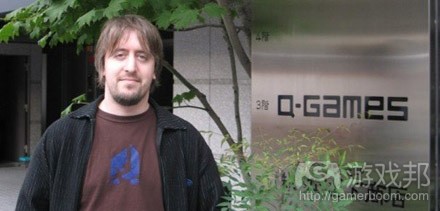
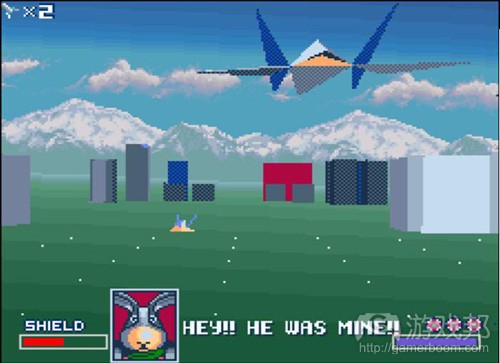
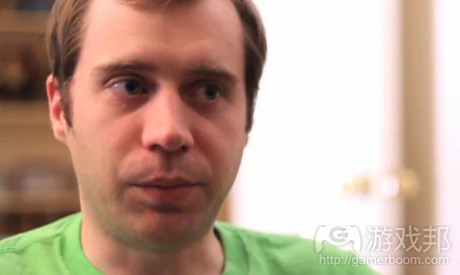

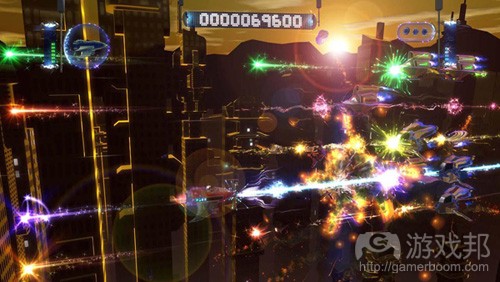
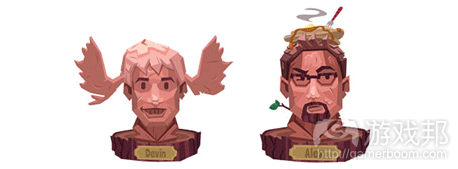

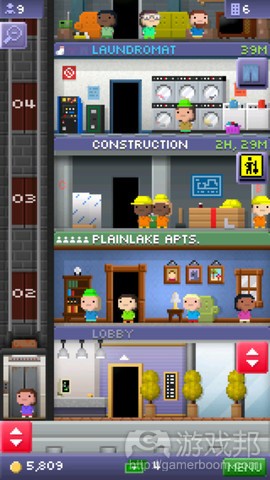
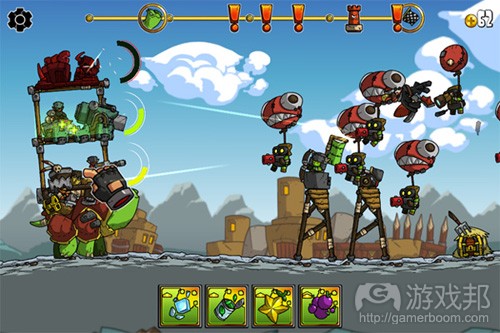
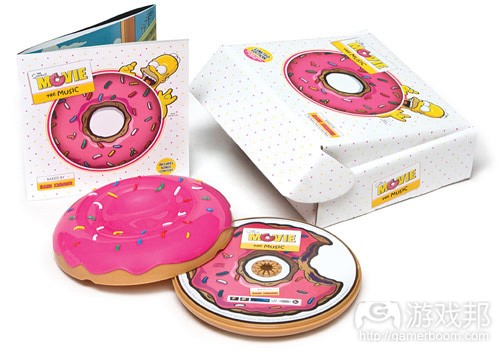














 闽公网安备35020302001549号
闽公网安备35020302001549号